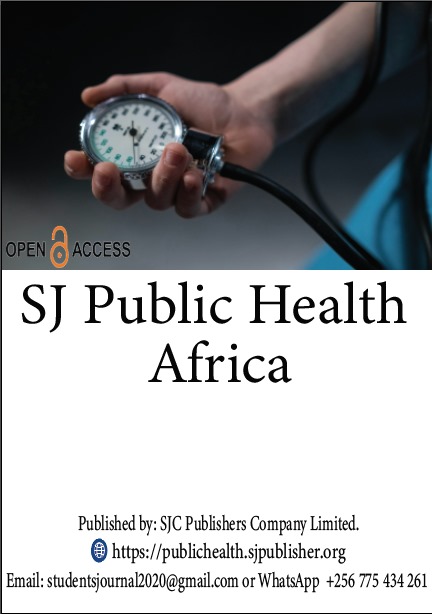PREVALANCE AND FACTORS OF URINARY TRACT INFECTION AMONG ADOLESCENT STUDENTS OF WAMATOVU MUSLIM SEED SECONDARY SCHOOL IN MPINGI DISTRICT. A CROSS-SECTIONAL STUDY.
DOI:
https://doi.org/10.51168/as9b8x79Keywords:
Prevalence and factors, Urinary Tract Infection, Adolescentstudents, Wamatovu Muslim seed secondary schoolAbstract
Background
Urinary tract infection is the inflammatory condition of the urinary system produced by a range of microbes such as Escherichia coli, Klebsiella, and many others. The study aimed to determine the prevalence of urinary tract infection among adolescent students of Wamatovu Muslim Seed Secondary School in Mpingi District.
Methodology
In a cross-sectional descriptive study design with a quantitative approach, the study population was based on all adolescent students of Wamatovu Muslim Seed secondary school in the Mpingi district.
Results
Majority of the respondents 75(75%) were female and 25(25%) were males. 85 (85%) have never suffered from UTI and only 15 (15%) have ever suffered from UTI. 60 (60%) had knowledge on UTI while 40(40%) didn’t have knowledge on UTI. 38(38%) reported poor personal hygiene as the pre-disposing factor to UTIs, 22 (22%) reported multiple sexual partners, 20(20%) didn’t know any, 16(16%) reported all the above and 4(4%) believed witchcraft factor. 30(30%) mentioned good personal hygiene, 25(25%) mentioned being with one sexual partner and 10 (10%) mentioned that taking water is a way of managing UTI. 50(50%) said they clean their toilet and bathrooms twice daily and at least 5(5%) said they never clean. 60 (60%) reported that they keep their underwear under the bed after washing, and the least 10 (10%) said they put it under the sun.
Conclusion
The prevalence of UTI infection was 15%, and the respondents had knowledge and preventive measures of Urinary tract infections.
Recommendation
Schools to improve the hygiene and add more water sources for students to access them easily. The government through the local health facilities sensitive women about the importance of personal hygiene and increased water intake in the reduction of urinary tract infection.
Downloads
Published
Issue
Section
License
Copyright (c) 2024 SHARIFAH NANYITI , DAISY KIYINGI .N. (Author)

This work is licensed under a Creative Commons Attribution-NonCommercial-NoDerivatives 4.0 International License.
The journal publishes under the Attribution-Noncommercial-NoDerivatives 4.0 international (CCBY-NC-ND 4.0) license which allows you to Share, Copy and redistribute the materials in any medium or format. The licensor cannot revoke these freedoms as long as you follow the license terms;
- Attribution: You must give appropriate credit, provide a link to the license, and indicate if changes were made. You may do so in any reasonable manner, but not in any way that suggests the licensor endorses you or your use.
- Non-commercial: You may not use the material for commercial purposes. Commercial use is one primarily intended for commercial advantage or monetary compensation.
- No Derivatives: if you remix, transform, or build upon the material, you may not distribute the modified material.
- No additional restrictions: You may not apply legal terms or technological measures that legally restrict others from doing anything the license permits.




